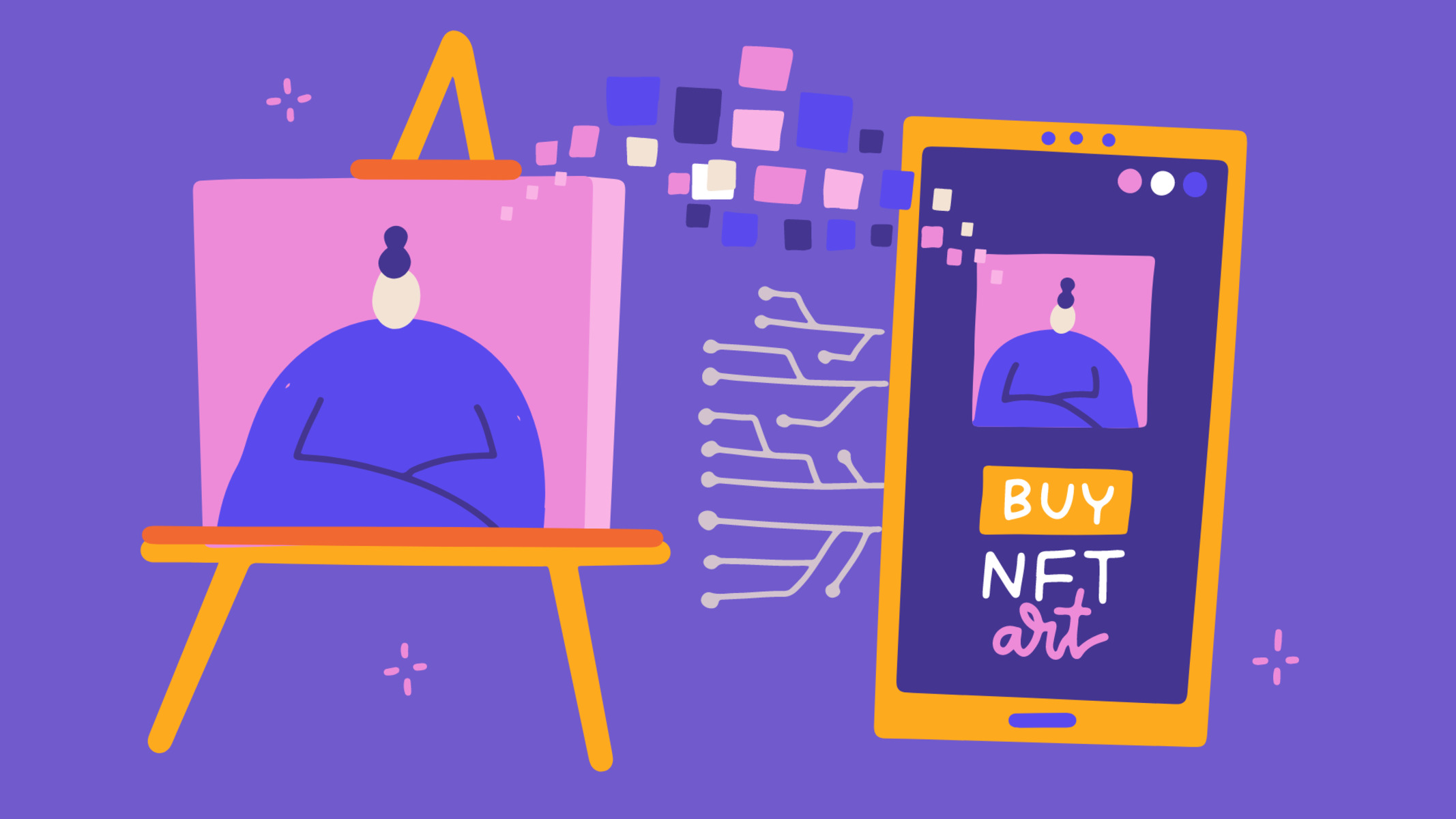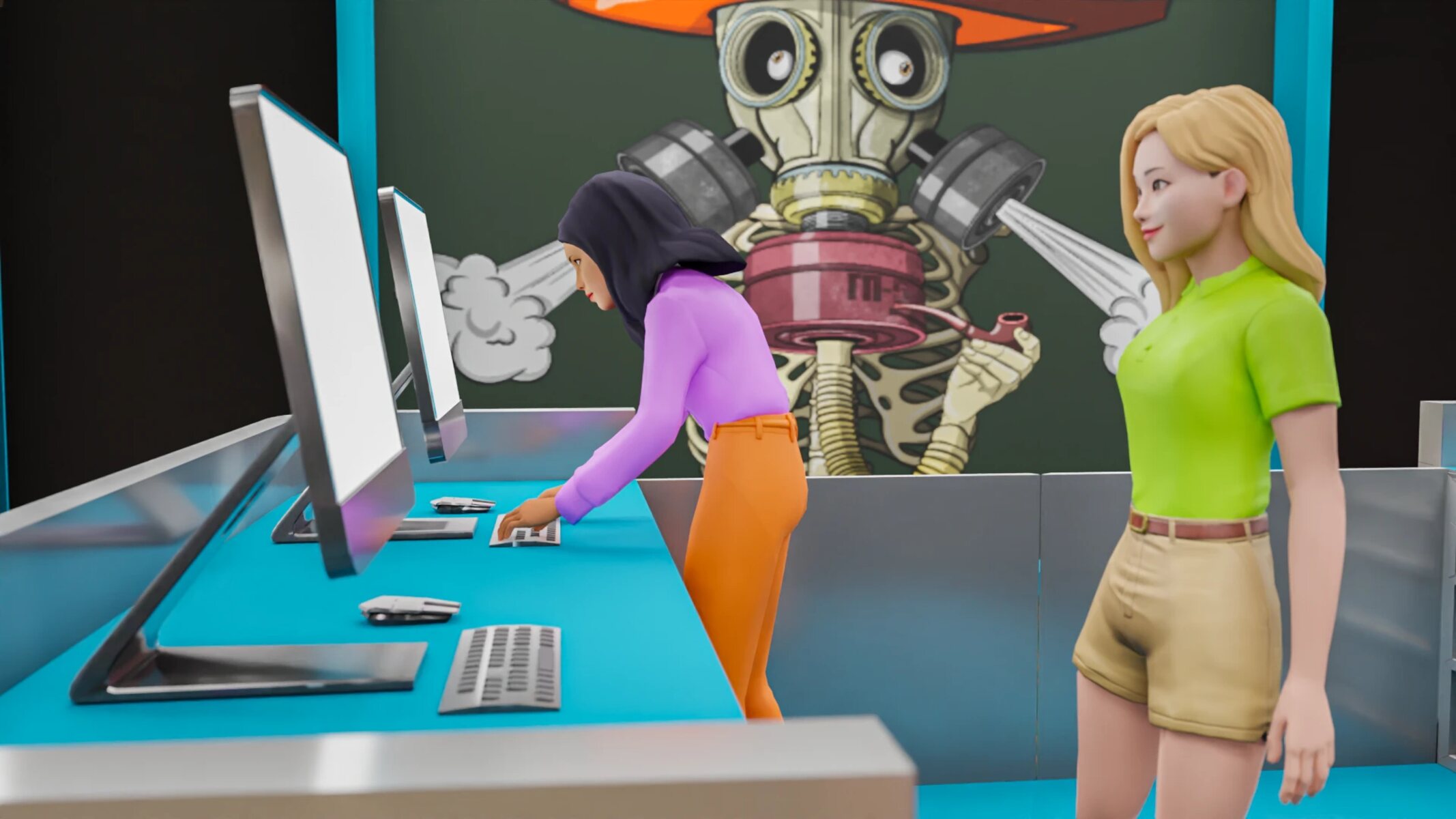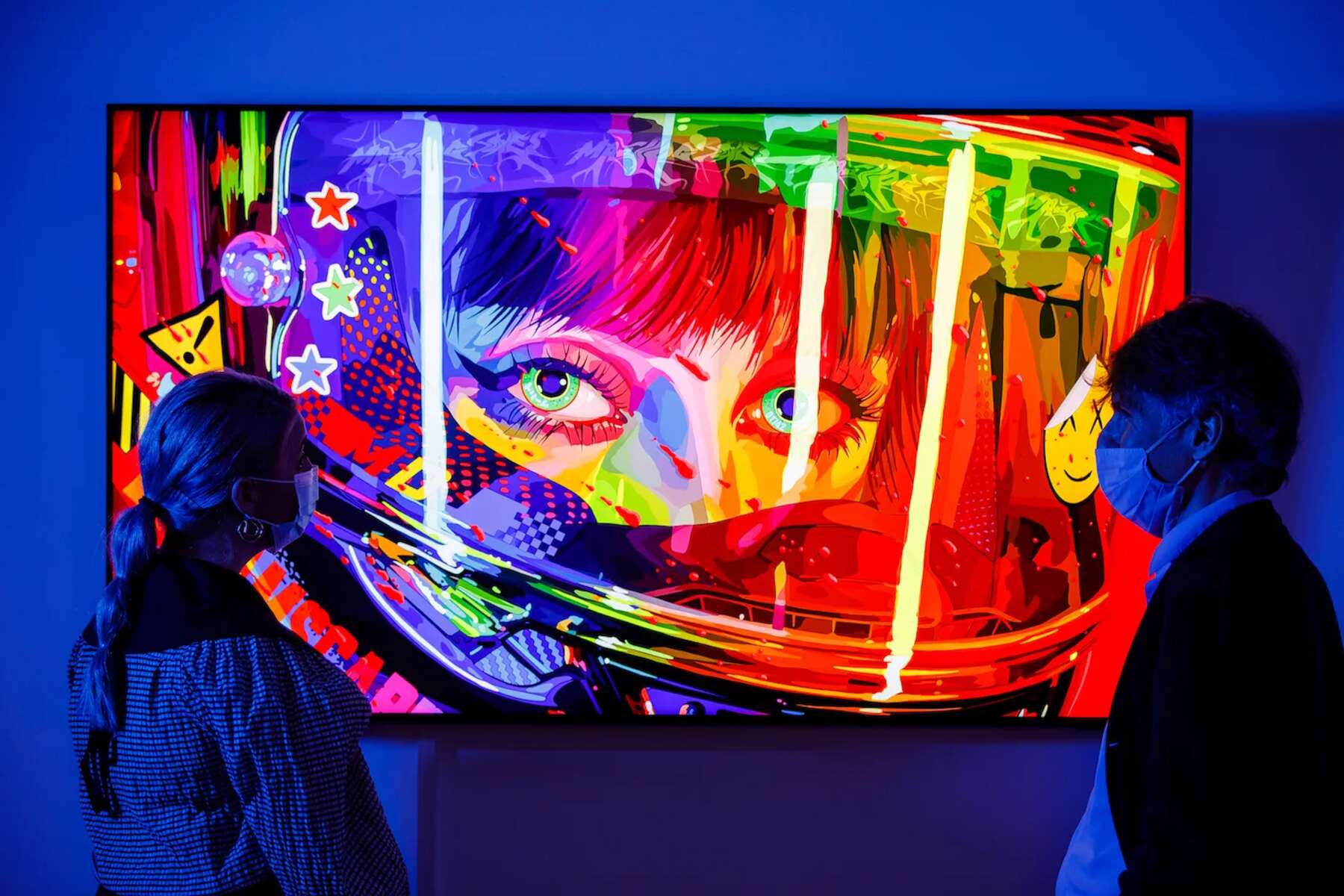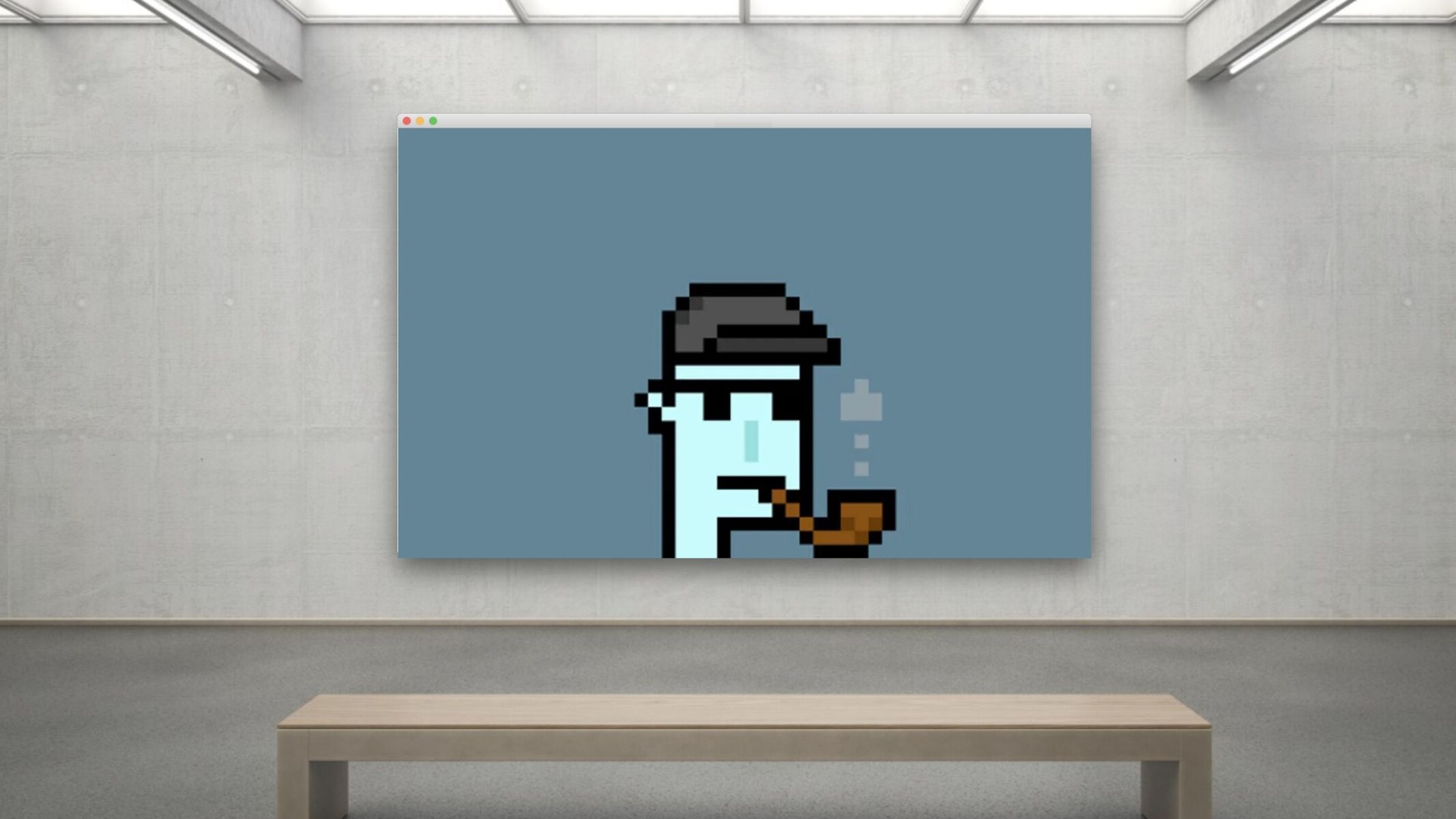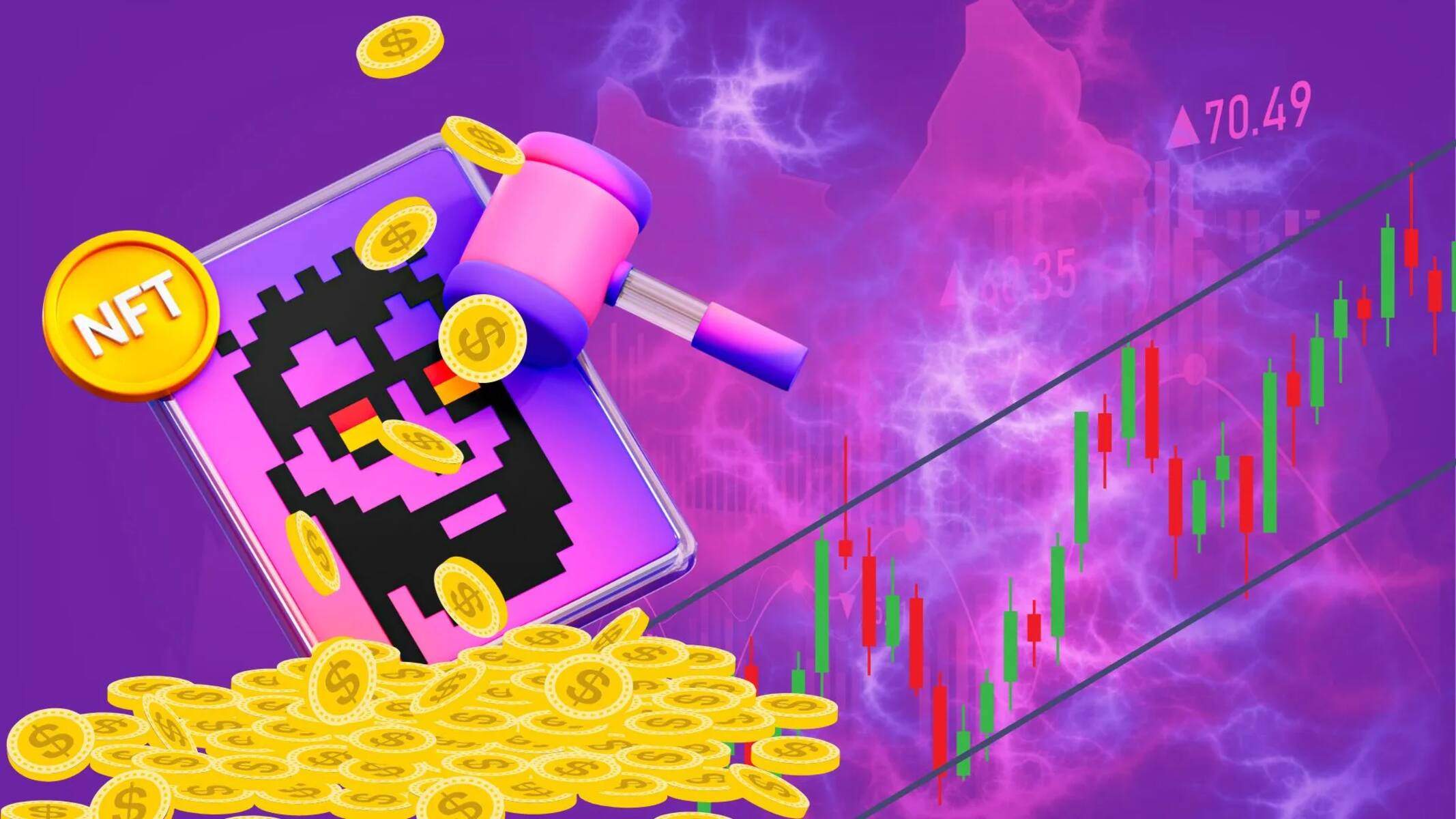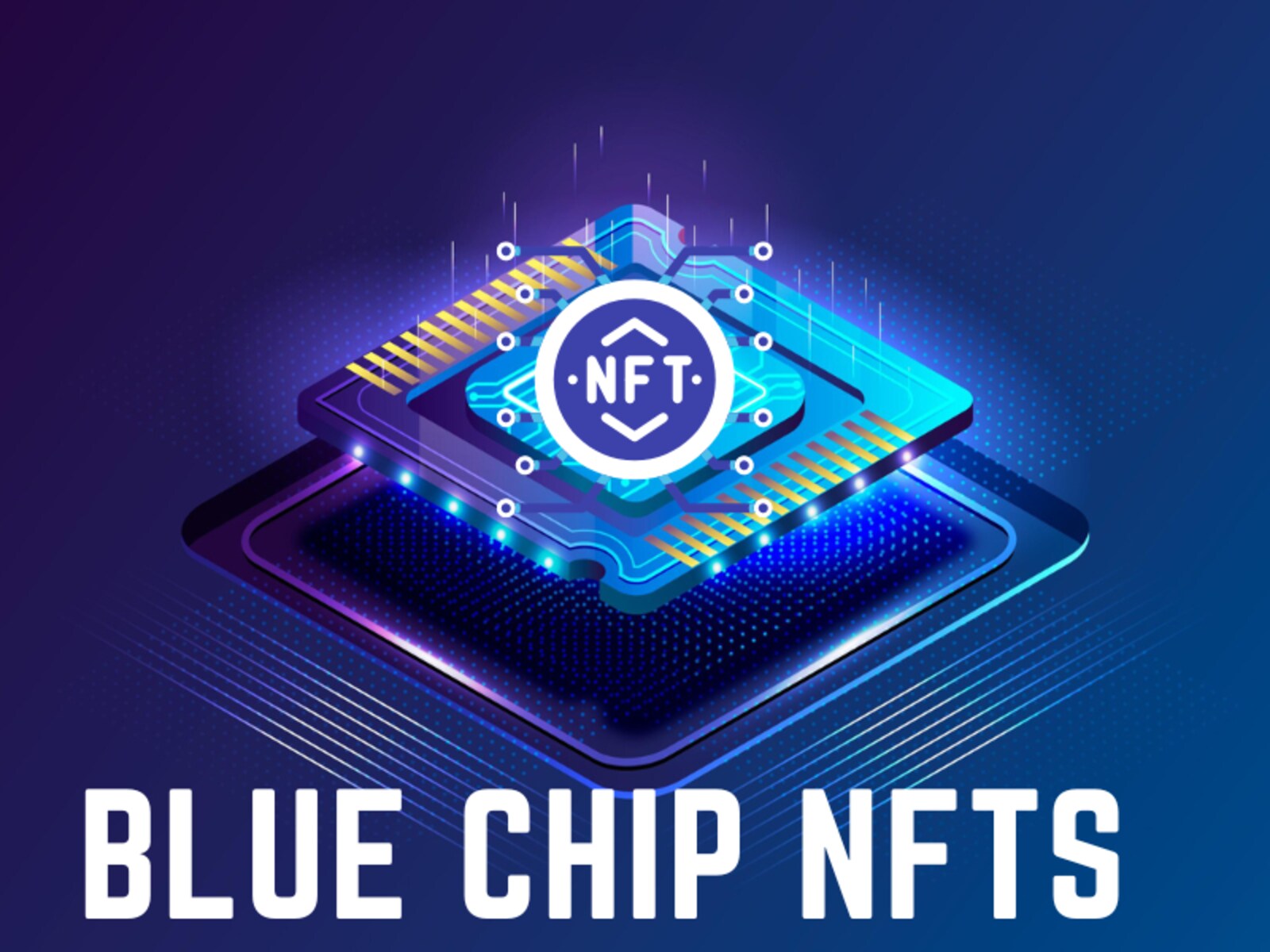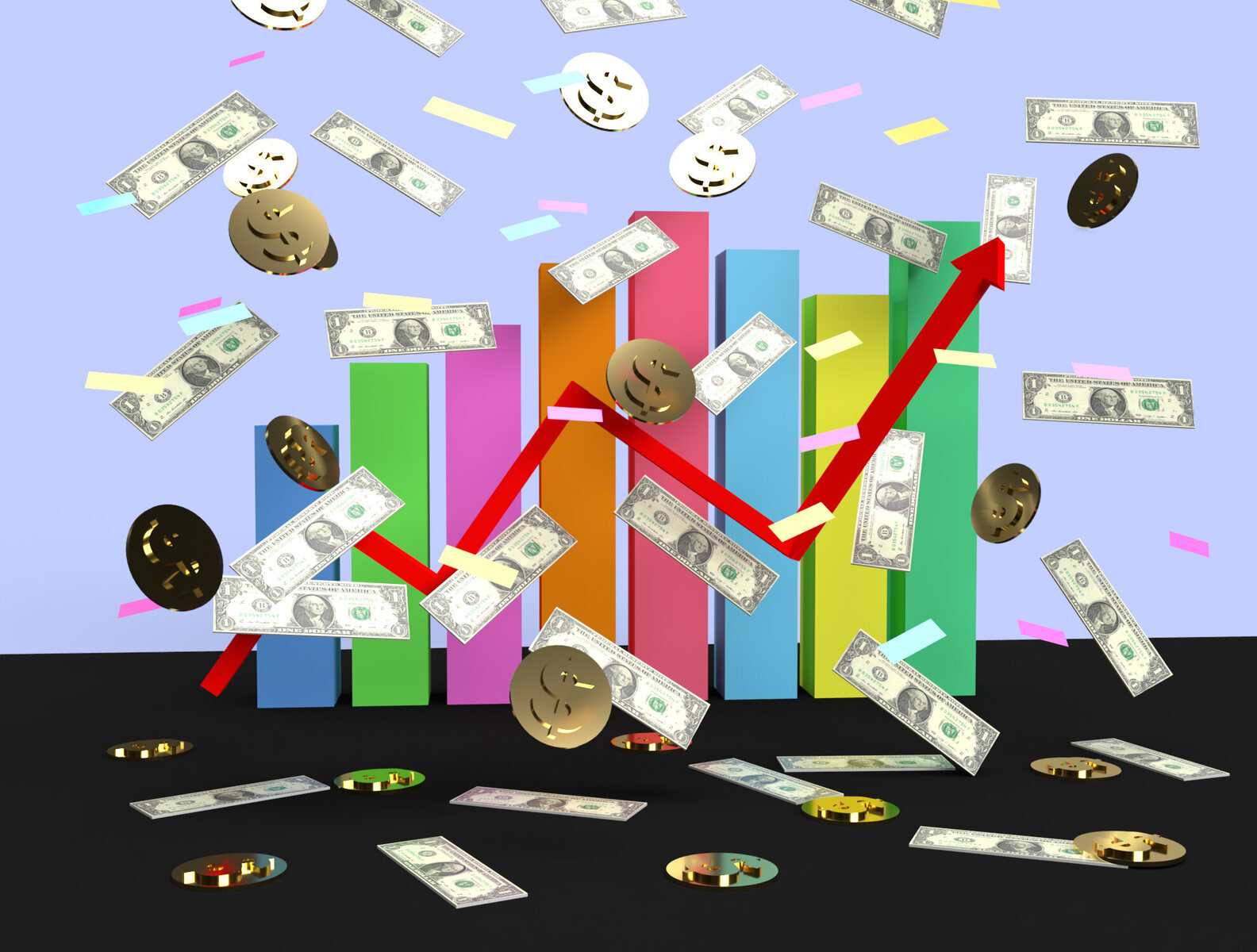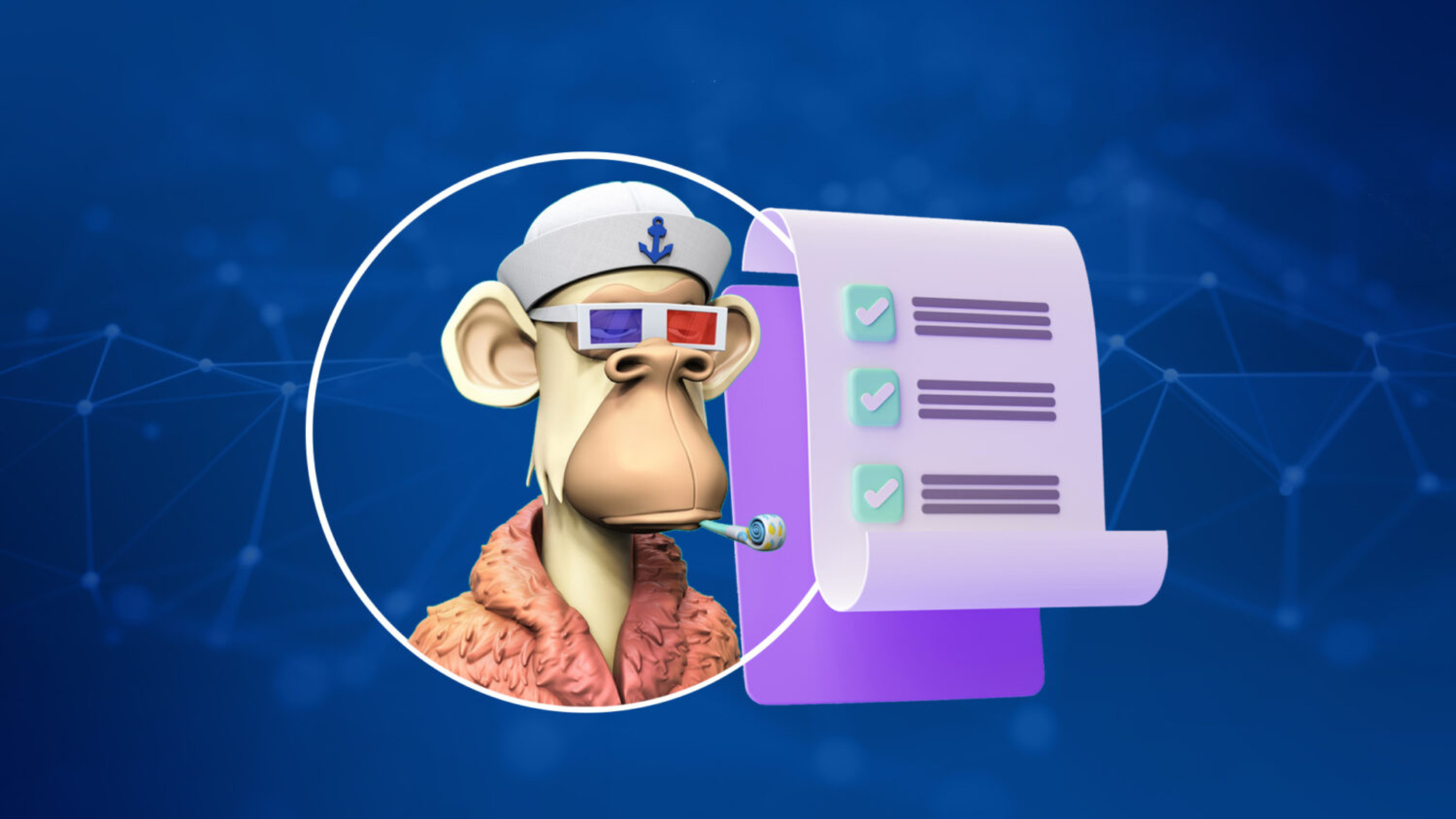What is NFT Art?
NFT art, short for non-fungible token art, has taken the art world by storm in recent years. It is a digital form of artwork that is authenticated and stored on a blockchain – a decentralized ledger that guarantees the ownership and provenance of the art piece.
Unlike traditional art, which can be replicated and reproduced, NFT art is unique and indivisible. Each piece of NFT art is assigned a unique token, verifying its authenticity and scarcity. This tokenization process allows artists to sell and trade their digital artworks securely and transparently.
NFT art has gained immense popularity due to its ability to revolutionize the art market. It provides artists with new opportunities for monetization and allows collectors to own exclusive digital artworks. NFT art encompasses a wide range of digital mediums, including images, animations, music, videos, and even virtual reality experiences.
One of the key benefits of NFT art is its ability to incorporate smart contracts into the art transaction process. Smart contracts are self-executing contracts with the terms of the agreement directly written into code. This enables artists to receive royalties whenever their NFT art is resold, ensuring a continuous stream of income.
Furthermore, NFT art opens up possibilities for artists to engage with a global audience in a decentralized manner. It eliminates the need for intermediaries such as galleries or auction houses, allowing artists to directly connect with collectors and art enthusiasts from all over the world.
While some may argue that NFT art lacks the physicality and tangibility of traditional art, it offers a new form of creative expression that merges technology with artistry. It challenges the traditional notions of what art is and allows artists to explore innovative mediums and concepts that may not be possible in the physical realm.
With the rise of cryptocurrencies and blockchain technology, NFT art has become a significant part of the digital art movement. It represents a shift in how we perceive, appreciate, and collect art in the digital age.
Understanding Blockchain Technology
Blockchain technology is the backbone of NFT art, providing a secure and transparent platform for the creation and ownership of digital assets. To understand NFT art fully, it’s essential to grasp the basic concepts of blockchain technology.
At its core, a blockchain is a decentralized and immutable digital ledger. It consists of a network of computers, known as nodes, that work together to validate and record transactions. Each transaction is grouped into blocks, which are then added to the chain in a sequential and permanent manner. This ensures the integrity and security of the data stored on the blockchain.
The decentralized nature of blockchain ensures that no single entity has complete control over the network. Instead, consensus algorithms are used to validate transactions and maintain the integrity of the ledger. One of the most common consensus algorithms used in blockchains is called proof of work (PoW), where nodes compete to solve complex mathematical problems to validate transactions.
Blockchain technology also guarantees the immutability of data. Once a transaction is recorded on the blockchain, it becomes virtually impossible to alter or tamper with. This makes it an ideal platform for establishing the ownership and provenance of digital assets like NFT art.
In the context of NFT art, blockchain technology provides a public and transparent record of ownership. Each NFT art piece is assigned a unique token that contains information about the artwork and its ownership history. This information is stored on the blockchain, making it publicly accessible and verifiable by anyone.
Additionally, blockchain technology enables the integration of smart contracts into NFT art transactions. Smart contracts are self-executing agreements that automatically enforce the terms and conditions of a transaction. They eliminate the need for intermediaries and provide artists with a way to receive royalties whenever their NFT art is sold or traded in the secondary market.
It’s worth noting that blockchain technology is not limited to NFT art. It has vast applications across various industries, including finance, supply chain management, healthcare, and more. Its ability to provide secure and transparent transactions has the potential to revolutionize numerous sectors.
Overall, understanding blockchain technology is crucial for comprehending the underlying mechanisms that power NFT art. It brings trust, transparency, and decentralization to the world of digital art, opening up new possibilities for artists, collectors, and enthusiasts alike.
How to Get Started with NFT Art
If you’re ready to dive into the exciting world of NFT art, here are some steps to help you get started on your journey:
- Educate Yourself: Familiarize yourself with the concept of NFT art, blockchain technology, and the platforms where NFT art is bought and sold. Read articles, watch tutorials, and join online communities to gain insights and learn from experienced artists and collectors.
- Choose Your Artistic Medium: Decide on the type of digital art you want to create as an NFT. It can be visual art, animations, music, videos, or even virtual reality experiences. Explore different art styles and techniques to find your niche and unleash your creativity.
- Set Up a Digital Wallet: To participate in the NFT art market, you’ll need a digital wallet to store your NFTs and transact on the blockchain. Choose a reliable and user-friendly wallet that supports the specific blockchain network you plan to use.
- Select the Right Blockchain Network: Different blockchain networks, such as Ethereum, Binance Smart Chain, and Flow, have their own NFT ecosystems. Research and choose the network that aligns with your goals, preferences, and the platforms you wish to use.
- Choose the Right Platform: Select an NFT marketplace or platform to mint and sell your NFTs. Consider factors such as platform fees, user reach, community support, and ease of use. Popular platforms for NFT art include OpenSea, Rarible, SuperRare, and Nifty Gateway.
- Create and Mint Your NFT: Use digital art creation software or tools to design your NFT artwork. Ensure that your artwork meets the platform’s specifications and guidelines for file type, dimensions, and size. Once ready, mint your NFT by uploading your artwork, adding metadata, and paying the minting fee.
- Promote Your NFT Art: Market and promote your NFT art to build visibility and attract potential buyers. Utilize social media platforms, art communities, and your existing network to showcase your work. Collaborate with influencers, participate in NFT art events, and engage with your audience to gain exposure.
- Stay Informed and Adapt: The NFT art space is ever-evolving, with new trends, technologies, and opportunities emerging regularly. Stay updated with the latest news, industry advancements, and market insights. Adapt your strategies, experiment with different approaches, and learn from the experiences of others in the community.
Getting started with NFT art requires a balance of creativity, technical knowledge, and entrepreneurial spirit. Embrace the learning journey, be persistent, and don’t be afraid to take risks. NFT art offers a unique avenue for artists to monetize their digital creations and connect with a global audience in ways never before possible.
Choosing the Right Platform
When venturing into the world of NFT art, one of the crucial decisions you’ll need to make is choosing the right platform to showcase and sell your digital creations. Here are some factors to consider when selecting an NFT art platform:
- Platform Reputation: Research the platform’s reputation and track record in the NFT art space. Look for platforms that have a solid user base, positive reviews, and a history of successful NFT sales. Platforms like OpenSea, Rarible, SuperRare, and Nifty Gateway are popular choices.
- Platform Fees: Evaluate the fee structure of the platform, including minting fees, transaction fees, and royalties. Different platforms have varying fee models, so consider your budget and how the fees will impact your profitability as an artist.
- User Base and Community: Consider the size and engagement of the platform’s user base and community. A larger user base can increase the visibility and potential reach of your NFT art. Additionally, an active community can provide valuable feedback, networking opportunities, and support to artists.
- Platform Features and Tools: Examine the features and tools offered by the platform. Some platforms may offer enhanced customization options, marketing tools, or analytics dashboards to help you manage and promote your NFT art effectively.
- Platform Accessibility: Ensure that the platform you choose aligns with your technical skills and comfort level. Some platforms may require more advanced blockchain knowledge, while others offer a user-friendly interface that simplifies the minting and selling process.
- Curation and Quality Control: Consider whether the platform has a curation process in place. A curated platform ensures a certain level of quality and can help your NFT art stand out among a curated selection of artworks.
- Platform Policies and Copyright Protection: Review the platform’s policies regarding copyrights, intellectual property rights, and content ownership. Ensure that the platform takes the necessary measures to protect your NFT art from copyright infringement.
- Secondary Market Options: Explore whether the platform has a robust secondary market, where buyers and collectors can trade and resell NFTs. A vibrant secondary market can provide artists with ongoing revenue streams through royalties on future sales.
- Community and Artist Support: Consider the level of support and engagement the platform provides to its artists. Look for platforms that offer resources, educational materials, artist collaborations, and opportunities for exposure within their community.
- User Experience: Lastly, assess the overall user experience of the platform. A user-friendly interface, intuitive navigation, and clear documentation can make your journey as an NFT artist smoother and more enjoyable.
Remember, choosing the right platform is essential for maximizing the visibility, profitability, and protection of your NFT art. Take the time to research and assess various platforms based on your specific goals, needs, and artistic style. By selecting the right platform, you can showcase your digital creations to a global audience and embark on a successful NFT art journey.
Creating Your NFT Artwork
Creating NFT artwork is an exciting process that allows you to unleash your creativity and explore the possibilities of digital art. Here are some steps to guide you in creating your NFT artwork:
- Choose Your Artistic Medium: Determine the digital medium in which you want to create your artwork. It could be digital paintings, illustrations, animations, 3D models, music, or any other form of digital expression. Select a medium that aligns with your artistic vision and skills.
- Develop Your Concept: Ideate and develop a strong concept for your NFT artwork. Consider the themes, messages, and emotions you want to convey through your artwork. Brainstorm ideas, make sketches, and refine your concept before moving on to the creation phase.
- Use the Right Tools and Software: Choose the appropriate tools and software that best suit your chosen artistic medium. Whether it’s digital art software like Photoshop, Procreate, or animation software like Blender or After Effects, ensure that you are comfortable and proficient in using them to bring your artwork to life.
- Create Your Artwork: Start creating your NFT artwork by applying your artistic skills and creativity. Experiment with different techniques, colors, textures, and compositions to make your artwork unique and visually captivating. Don’t be afraid to take risks and explore new approaches in your creative process.
- Maintain High Quality and Resolution: Pay attention to the quality and resolution of your artwork. Aim for high-resolution files to ensure your NFT art can be displayed and appreciated in its full glory. This is especially important if your artwork includes fine details or requires zooming in for a closer look.
- Add Metadata: When preparing your NFT artwork, include relevant metadata such as the title, description, edition number (if applicable), and any additional details you want to share with collectors. Clear and comprehensive metadata helps potential buyers understand the concept and value of your artwork.
- Consider Rarity and Exclusivity: As you create your NFT artwork, think about how you can make it stand out and create a sense of rarity and exclusivity. This could involve limiting the number of editions, creating unique variations, or offering special bonuses or perks to the buyers of your artwork.
- Protect Your Artwork: Prioritize the protection of your NFT artwork from unauthorized copying or distribution. Watermark your digital art when sharing it online to discourage unauthorized use. Additionally, consider registering your artwork with a copyright office to establish legal ownership.
- Seek Feedback and Iteration: Share your work with trusted friends, mentors, or online art communities to gather feedback and constructive criticism. Be open to suggestions and use feedback to refine and improve your artwork. Iteration is often a crucial part of the creative process.
- Minting Your NFT: Once you are satisfied with your NFT artwork, you can proceed to mint it on your chosen NFT platform. Follow the platform’s guidelines for file formats, sizes, and metadata. Pay attention to the minting fees and gas fees associated with the blockchain network you are using.
Creating NFT artwork allows you to explore new horizons in digital art and reach a global audience, showcasing your unique style and creative vision. Embrace the process, stay true to your artistic voice, and continue to evolve as an NFT artist.
Tips for Designing an Eye-Catching NFT
Designing an eye-catching NFT is essential to capture the attention of potential buyers and stand out in the competitive NFT art market. Here are some tips to help you create visually stunning and captivating NFT artwork:
- Create a Strong Concept: Start by developing a clear and compelling concept for your NFT artwork. Consider the story, emotion, or message you want to convey to your audience. A well-defined concept forms the foundation of a visually impactful piece.
- Focus on Visual Impact: Utilize bold colors, striking compositions, and contrasting elements to create visual impact. Leverage the power of colors and contrasts to evoke emotions and draw viewers’ attention to your artwork.
- Experiment with Unique Styles and Techniques: Dare to explore new artistic styles and techniques. Push the boundaries of your creativity and experiment with unconventional approaches. The goal is to create a distinct and memorable visual experience for viewers.
- Pay Attention to Composition: Ensure a balanced and visually pleasing composition in your NFT artwork. Consider principles like the rule of thirds, leading lines, and symmetry to guide the viewer’s eye and create a harmonious arrangement of elements.
- Create Depth and Dimension: Add depth to your NFT artwork by incorporating layers, shadows, textures, or perspective techniques. This creates a sense of visual depth, making your artwork more engaging and immersive.
- Consider Motion and Animation: If appropriate for your artistic vision, embrace motion and animation in your NFT artwork. Animated elements can enhance the storytelling aspect and draw additional attention to your artwork.
- Showcase Attention to Detail: Pay meticulous attention to detail in your NFT artwork. Refine and polish every aspect of your work, ensuring that even the smallest elements contribute to the overall composition and visual impact.
- Experiment with Digital Effects: Take advantage of digital effects and tools to enhance your NFT artwork. Explore filters, blending modes, lighting effects, and other digital manipulation techniques to add a touch of uniqueness to your piece.
- Consider Display and Presentation: Visualize how your NFT artwork will be displayed on digital platforms and screens. Consider factors like scaling, aspect ratio, and how your artwork will appear in various contexts to ensure it looks its best when showcased.
- Tell a Compelling Story: Craft a narrative or tell a captivating story through your NFT artwork. Engage viewers emotionally and intellectually by leaving room for interpretation, creating intrigue, or sparking curiosity.
- Be Authentic and Unique: Embrace your artistic voice and let your unique style shine through in your NFT artwork. Don’t be afraid to break away from trends and carve your own path. Authenticity and uniqueness will help your artwork stand out among the crowd.
- Seek Feedback and Iterate: Share your work with trusted peers, mentors, or online art communities. Listen to feedback and iteratively improve your artwork based on constructive criticism and suggestions.
Designing an eye-catching NFT requires a combination of artistic skill, attention to detail, and creativity. Experiment, take risks, and follow your artistic instincts to create visually stunning and captivating NFT artwork that resonates with your audience.
Pricing and Selling Your NFT Art
Pricing and selling your NFT art is a crucial step in monetizing your digital creations and establishing your presence in the NFT art market. Here are some tips to help you determine the right pricing and successfully sell your NFT artwork:
- Evaluate the Value of Your Artwork: Assess the artistic value, uniqueness, and demand for your NFT artwork. Consider factors such as your artistic reputation, the complexity of the artwork, your previous sales history, and the size of your audience. This will help you set a fair and realistic price.
- Research the Market: Study the NFT art market and analyze the pricing trends, sales of similar artwork, and the demand for your specific genre or style. This will give you insights into how to position your artwork and determine a competitive price point.
- Consider Scarcity and Editions: Determine whether you want to sell limited editions of your artwork or opt for a one-of-a-kind piece. Limited editions with a lower number of available copies can create a sense of exclusivity and increase the perceived value of your art.
- Factor in Costs and Fees: Take into account any costs associated with creating, promoting, and selling your NFT art. This includes the initial minting fees, transaction fees on the blockchain network, and any platform fees. Ensure that the potential earnings justify the expenses.
- Set a Base Price and Royalties: Deciding on a base price for your NFT artwork can be subjective, but consider the effort, time, and resources you invested in creating the piece. Additionally, set the royalty percentage for secondary sales to earn ongoing revenue as your artwork appreciates in value.
- Build Your Reputation and Portfolio: Initially, consider setting prices that are more accessible to attract buyers and establish a reputation in the NFT art community. As your portfolio grows and your artwork gains recognition, you can gradually increase your prices accordingly.
- Market and Promote Your Artwork: Utilize your network, social media platforms, online art communities, and dedicated NFT art platforms to market and promote your artwork. Engage with potential buyers, share behind-the-scenes insights, and leverage influencers to reach a wider audience.
- Create a Compelling Listing: Craft an enticing and informative listing for your NFT artwork. Include captivating visuals, a detailed description, and relevant metadata to showcase the value and story behind your artwork. High-quality presentation can significantly impact a potential buyer’s decision.
- Engage with Your Audience: Interact with potential buyers, collectors, and art enthusiasts who show interest in your NFT art. Respond to inquiries promptly, provide additional information, and establish a personal connection. Building relationships can lead to long-term support and potential referrals.
- Consider Initial Auctions or Raffles: For artists starting out in the NFT art space, organizing a limited-time auction or raffle can generate excitement and increase the perceived value of your artwork. This can also help you attract buyers who are interested in unique opportunities or exclusive editions.
- Monitor and Adapt: Continuously monitor the performance of your NFT artwork, track market trends, and adapt your pricing strategy accordingly. Be open to adjusting prices based on demand, feedback, and the evolving value of your artwork in the NFT art market.
Pricing and selling your NFT art requires a balance between understanding the market, valuing your artwork appropriately, and effectively promoting your creations. Employ these tips and strategies to maximize your chances of success in the NFT art space.
Marketing and Promoting Your NFT Art
Effective marketing and promotion are key to increasing the visibility of your NFT art and attracting potential buyers. Here are some strategies to help you market and promote your NFT artwork:
- Build a Strong Online Presence: Establish a professional online presence through social media platforms, personal websites, and dedicated NFT art platforms. Consistently share updates, behind-the-scenes insights, and sneak peeks of your artwork to engage your audience.
- Identify Your Target Audience: Define your target audience based on the genre, style, and theme of your NFT art. Research art enthusiasts, collectors, and communities that align with your artistic vision. Tailor your marketing efforts to resonate with this specific audience.
- Engage with the NFT Art Community: Participate in online forums, communities, and art-related events to connect with other artists and collectors. Network with fellow creators, collaborate on projects, and support each other’s work. Engaging with the NFT art community can help boost your visibility and gain valuable exposure.
- Collaborate with Influencers and Curators: Seek opportunities to collaborate with influencers, curators, or established artists in the NFT art space. Collaborations can expose your artwork to a wider audience and lend credibility to your portfolio. Partnering with industry influencers can significantly amplify your reach.
- Utilize Social Media Platforms: Leverage the power of social media platforms like Twitter, Instagram, and TikTok to showcase your NFT artwork. Share captivating visuals, engage with your audience, host giveaways, and participate in relevant art-related hashtags and challenges to increase your visibility.
- Promote through Content Creation: Create valuable content related to your NFT art, such as tutorials, time-lapse videos of your creative process, or blog posts on your artistic journey. Share your expertise and insights to attract art enthusiasts who may be interested in supporting your work.
- Attend NFT Art Events and Virtual Exhibitions: Participate in virtual art exhibitions, conferences, or NFT art events. These events provide opportunities to showcase your artwork, interact with collectors, and connect with industry professionals. Stay updated with upcoming events and actively engage with attendees.
- Utilize Email Marketing: Build an email list of interested buyers, collectors, and art enthusiasts. Send regular newsletters or updates about your latest NFT art releases, upcoming projects, or exclusive offers. Personalized and targeted emails can be a powerful tool to nurture relationships and drive sales.
- Collate Testimonials and Reviews: Capture testimonials and reviews from satisfied buyers and collectors who have purchased your NFT art. Display these testimonials on your website or social media platforms to build trust and credibility among potential buyers.
- Offer Limited-Time Discounts or Bonuses: Generate excitement and urgency by offering limited-time discounts or bonuses for your NFT artwork. Limited-time offers can incentivize potential buyers to take action and make a purchase before the offer expires.
- Engage in Cross-Promotion: Collaborate with fellow artists or creators in the NFT art community to cross-promote each other’s work. This mutually beneficial strategy exposes your artwork to a wider audience and can lead to new fans and potential buyers.
- Monitor and Analyze Performance: Use analytics and tracking tools to monitor the performance of your marketing efforts. Track engagement metrics, website traffic, conversion rates, and sales data to assess the effectiveness of your marketing strategies. Evaluate the data and make adjustments as needed.
Implementing effective marketing and promotion strategies is crucial in gaining visibility, attracting buyers, and growing your presence in the NFT art space. By utilizing a mix of online platforms, collaborations, and targeted outreach, you can increase your chances of success as an NFT artist.
NFT Art Trends and Emerging Technologies
The world of NFT art is constantly evolving, with new trends and emerging technologies shaping the landscape. Staying informed and adapting to these changes is crucial for artists and collectors alike. Here are some notable NFT art trends and emerging technologies to keep an eye on:
- Metaverse and Virtual Reality (VR): The concept of the metaverse, a virtual reality space where users can interact with digital assets and other users, is gaining traction. NFT art is poised to play a significant role in shaping the aesthetics and experiences within the metaverse, creating new opportunities for artists to showcase their creations in immersive environments.
- Dynamic and Interactive NFTs: Emerging technologies enable the creation of dynamic and interactive NFTs. These NFTs can change, respond to user input, or evolve over time. Interactive NFTs allow artists to engage audiences in new and innovative ways, blurring the boundaries between art and user experience.
- Environmental Sustainability: With the growing concerns about the environmental impact of blockchain networks, the NFT art community is exploring sustainable alternatives. Artists and platforms are looking for solutions that reduce energy consumption and minimize the carbon footprint associated with minting and trading NFTs.
- NFT Art Collectibles: NFT art collectibles, also known as NFTs with gamification elements, are on the rise. These collectibles include digital trading cards, virtual pets, and other limited-edition items that appeal to collectors and enthusiasts. NFT art collectibles often come with utility within virtual environments and can be traded or used to unlock exclusive features.
- Artificial Intelligence (AI) and Generative Art: AI plays a significant role in generative art, where algorithms create unique and ever-changing artworks. Artists are using AI to explore new realms of creativity, generating intricate and thought-provoking pieces. The intersection of AI and NFT art opens up possibilities for dynamic, AI-generated NFTs that evolve and adapt over time.
- Celebrity and Brand NFT Collaborations: Increasingly, celebrities, brands, and established artists are entering the NFT art space through collaborations. These partnerships bring mainstream visibility to NFT art and attract a wider audience. Celebrity-led NFT drops and brand collaborations help bridge the gap between traditional industries and the digital art world.
- Blockchain Interoperability: Interoperability between different blockchain networks is a current focus within the NFT art community. This allows artists and collectors to seamlessly transact, trade, and display NFTs across multiple blockchain ecosystems. Interoperability expands the reach and liquidity of NFT art, creating a more connected and accessible marketplace.
- Peer-to-Peer NFT Marketplaces: The rise of decentralized, peer-to-peer NFT marketplaces challenges the dominance of centralized platforms. These platforms offer greater control, lower fees, and increased transparency for artists and collectors. Peer-to-peer marketplaces enable direct transactions between individuals, removing the need for intermediaries.
- Augmented Reality (AR) Integration: AR integration in NFT art allows viewers to experience digital artworks in real-world environments. Artists can overlay their NFT art onto physical spaces using AR technology, creating unique and immersive experiences for collectors. AR integration unlocks new possibilities for showcasing and interacting with NFT art outside of traditional digital displays.
- Crossover with Traditional Art Forms: NFT art is blurring the boundaries between traditional and digital art forms. Artists are combining elements of physical art, such as sculptures or paintings, with digital components, resulting in hybrid NFT art. These crossovers push the boundaries of creativity, recontextualizing traditional mediums within the digital realm.
NFT art trends and emerging technologies constantly reshape the way artists create, collectors collect, and audiences engage with art. Keeping up with these trends and embracing emerging technologies can open new doors for artistic expression, foster innovation, and unlock novel opportunities in the dynamic world of NFT art.
Protecting Your NFT Art from Copyright Infringement
As an NFT artist, protecting your artwork from copyright infringement is crucial to safeguarding your creative work and maintaining its value. Here are some measures you can take to protect your NFT art:
- Register Your Copyright: Register your NFT artwork with a copyright office or relevant intellectual property organizations in your jurisdiction. Copyright registration provides legal evidence of ownership and exclusive rights to your artwork, strengthening your position in case of copyright disputes.
- Watermark Your Artwork: Watermarking your NFT artwork can act as a deterrent against unauthorized use or distribution. Add a visible watermark that includes your signature, logo, or artist’s name to the digital files you share or display online. Watermarks make it more difficult for others to claim ownership or use your artwork without permission.
- Embed Copyright Information: Embed copyright information, such as your name, contact details, and the rights associated with your artwork, into the metadata of your NFT. This information travels with the NFT, making it clear to buyers and collectors that you are the rightful owner and they must respect your copyright.
- Monitor and Enforce your Rights: Regularly monitor online platforms, marketplaces, and social media for any unauthorized use or infringement of your NFT art. If you suspect copyright infringement, gather evidence and take prompt action to protect your rights, such as issuing takedown notices or seeking legal advice.
- Use Digital Certificates of Authenticity: Provide digital certificates of authenticity with each sale of your NFT artwork. These certificates serve as proof of ownership and the originality of your artwork. Including a unique and encrypted certificate adds an additional layer of authenticity and makes it harder for counterfeiters to reproduce your work.
- Include Terms and Conditions: Clearly outline the terms and conditions of use for your NFT artwork. Specify how the artwork can be displayed, shared, or used by the buyer. This helps regulate the usage rights and prevents unauthorized exploitation of your artwork.
- Consider Licensing: Explore licensing options to generate additional revenue streams while maintaining control over your artwork. Licensing grants permission to others to use your artwork in specific ways, under specific conditions, in return for a fee or royalties. Licensing allows you to retain ownership and control, ensuring your work is used correctly and credited appropriately.
- Choose Reputable Marketplaces: Opt for well-established and reputable NFT marketplaces that prioritize artists’ rights and have strong policies against copyright infringement. Research and carefully review the terms and conditions of each marketplace to ensure they provide sufficient copyright protection and offer appropriate mechanisms to report infringement issues.
- Educate and Raise Awareness: Educate your audience, buyers, and collectors about copyright infringement and the importance of respecting artists’ rights. Share information on how your artwork can be used, the consequences of infringement, and the benefits of supporting artists by purchasing legitimate NFTs.
- Consult Legal Professionals: If you encounter complex copyright issues or infringements that require legal action, consult with intellectual property lawyers who specialize in copyright law. They can provide expert guidance, represent your interests, and help enforce your rights in cases of significant infringement.
While these measures can strengthen the protection of your NFT art, it’s important to stay vigilant and proactive in monitoring your artwork’s usage. Stay informed about copyright laws in your jurisdiction and adapt your protection strategies accordingly. Safeguarding your NFT art not only protects your creative work but also contributes to the integrity and value of the NFT art ecosystem as a whole.
The Future of NFT Art
The future of NFT art holds immense potential for further growth, innovation, and opportunities for artists, collectors, and the wider art community. Here are some trends and possibilities that shape the future of NFT art:
- Increased Mainstream Adoption: As NFT art gains more visibility and recognition, its mainstream adoption is expected to continue to grow. Established artists, celebrities, and brands are increasingly entering the NFT art space, bringing with them larger audiences and more diverse creative expressions.
- Artistic Collaboration and Cross-Disciplinary Integration: The collaborative nature of NFT art allows artists from different disciplines to converge and create unique projects. We can expect to see further integration of NFT art with music, film, fashion, gaming, and other creative industries, pushing the boundaries of what is possible with digital art.
- Emergence of Curated NFT Art Galleries: Curated NFT art galleries and virtual exhibitions are likely to gain prominence. These curated platforms will provide a curated selection of NFT artwork, enhancing discoverability for artists and offering collectors a trusted environment to explore and acquire unique digital creations.
- Tokenization of Real-World Assets: NFTs are not limited to digital artworks alone. Tokenization of real-world assets such as real estate, collectibles, and intellectual property rights will gain traction. This opens up new possibilities for fractional ownership and enables broader access to traditionally illiquid assets.
- Advancements in Digital Ownership and Provenance: Blockchain technology will continue to evolve, offering improved mechanisms for proving ownership and establishing the provenance of NFT art. This will enhance trust and authenticity, ensuring the long-term value and investment potential of NFT artworks.
- Sustainability and Energy Efficiency: As concerns about the environmental impact of blockchain networks grow, efforts towards sustainability and energy efficiency in NFT art creation and transactions will gain momentum. Artists and platforms will explore eco-friendly alternatives and seek ways to minimize the carbon footprint associated with NFT art.
- Enhanced NFT Interoperability and Standards: Interoperability between different blockchain networks and the development of industry standards for NFTs will improve the fluidity and accessibility of NFT art. This will allow artists and collectors to seamlessly trade and exhibit their NFTs across various platforms and ecosystems.
- Artificial Intelligence and Machine Learning Integration: The integration of artificial intelligence and machine learning technologies will further push the boundaries of creative expression in NFT art. AI-powered tools and algorithms will assist artists in the creation process, generate unique and personalized NFTs, and provide new avenues for immersive and interactive digital experiences.
- Integration of Physical and Digital Art: The convergence of physical and digital art will become more prevalent, blurring the line between the two. NFTs will represent ownership and provenance of physical art pieces, unlocking new possibilities for artists to leverage the benefits of blockchain technology while maintaining the tangibility of traditional art forms.
- Evolution of NFT Art Marketplaces and Infrastructure: NFT art marketplaces and the underlying infrastructure will continue to evolve, providing improved user experiences, enhanced discoverability, and innovative features. The development of decentralized platforms and community-owned marketplaces will empower artists and collectors, enabling greater control and decentralization of the NFT art ecosystem.
The future of NFT art holds immense potential for artists to engage with global audiences, explore new creative avenues, and monetize their digital creations. As the technology evolves and the market matures, NFT art will continue to reshape the art industry and redefine the concept of ownership, authenticity, and artistic expression in the digital age.







